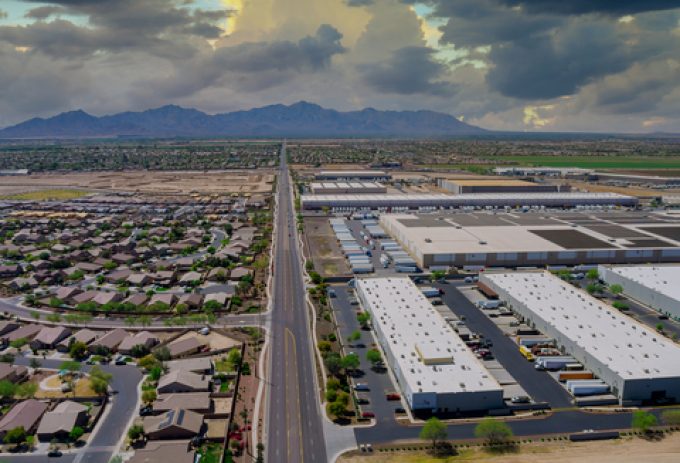Cooling demand increases warehousing vacancies, with rents inching down
Cooling demand has ended the long run of increasing warehousing costs and nudged the average ...

Warehousing landlords are poised to make more money this year without adding to their footprint, as despite slowing demand leasing rates are expected to rise.
The slower economic conditions last year did not put a dent in the upward momentum of warehouse costs, the US lease rate climbing 20.6% since 2022, to a record $9.72 per sq ft, according to datafrom real estate giant Colliers.
However, the upward momentum in industrial real estate rents slowed in the second half of the year, it reported.
There was also regional divergence: some markets – including greater Los Angeles, Philadelphia and Detroit – registered annual declines in industrial real estate lease rates; whereas the likes of the New York City metro area, San Francisco Bay and Chicago showed increases over 2022 warehouse rent levels.
Despite the slowdown, Colliers predicts the upward trend of warehousing rents to continue this year, pointing to still low vacancy levels.
And its assessment is shared by industrial real estate behemoth Prologis. During its earnings call last month, management predicted “modestly positive” rent growth this year.
But the persistently high warehousing costs and predictions of further increases fly in the face of massive waves of lay-offs. By December, the number of jobs in warehousing and storage had dropped to 1.85 million, the fewest since November 2021, according to the US Bureau of Labor Statistics.
And jobs continue to melt away in the sector. A number of retail brands, e-commerce firms and 3PLs have announced staff cuts and facility closures for this year. This is hardly surprising, given a continuing focus on trimming costs that has prompted firms to reassess and consolidate operations and reduce the number of shipping locations.
One reflection of this trend has been the decline of deals involving mega-facilities – those larger than a million sq ft. Real estate firm CBRE reported that last year, 43 of the top 100 warehouse deals involved these behemoths, a drop from 63 such agreements in the top 100 of 2022 and from 57 the year before.
This trend pushed the average size of the top 100 warehouse deals down to 986,744 sq ft last year.
The demand outlook remains hazy. Recent US imports were above expectations, prompting predictions that the US may avoid recession. On the other hand, consumers have shown signs of wariness, following a spike in the national credit card balance in Q3 23. Uncertainty is expected to cause importers to tread carefully, while maintaining elevated inventory levels to brace for disruptions.
Broadly, this points to no significant rise in inventories in the foreseeable future. On the other hand, supply is headed for a big drop in terms of new space becoming available. The facility construction boom, triggered by the surging e-commerce market of 2021/22, has largely run its course. Colliers warned that construction starts had dropped off significantly, resulting in a dwindling construction pipeline.
The ITS Logistics US Distribution and Fulfilment Index for the first quarter of this year, which ITS released yesterday, points to a 50% drop in new space construction. It shows construction of 282.4 million sq ft of space has begun this year, down from 598m sq ft a year earlier.
“Overall, starts have slowed as the year progressed and interest rates continued to rise,” said Ryan Martin, ITS president of distribution and fulfilment. “The third quarter of 2023 saw 66.2m sq ft of starts, after 93.1m sq ft broke ground in Q2 and 100.6m in the first quarter.
“In addition, consumer confidence ended the year on an optimistic note, but is still far from where it was in 2019,” he added.
Comment on this article